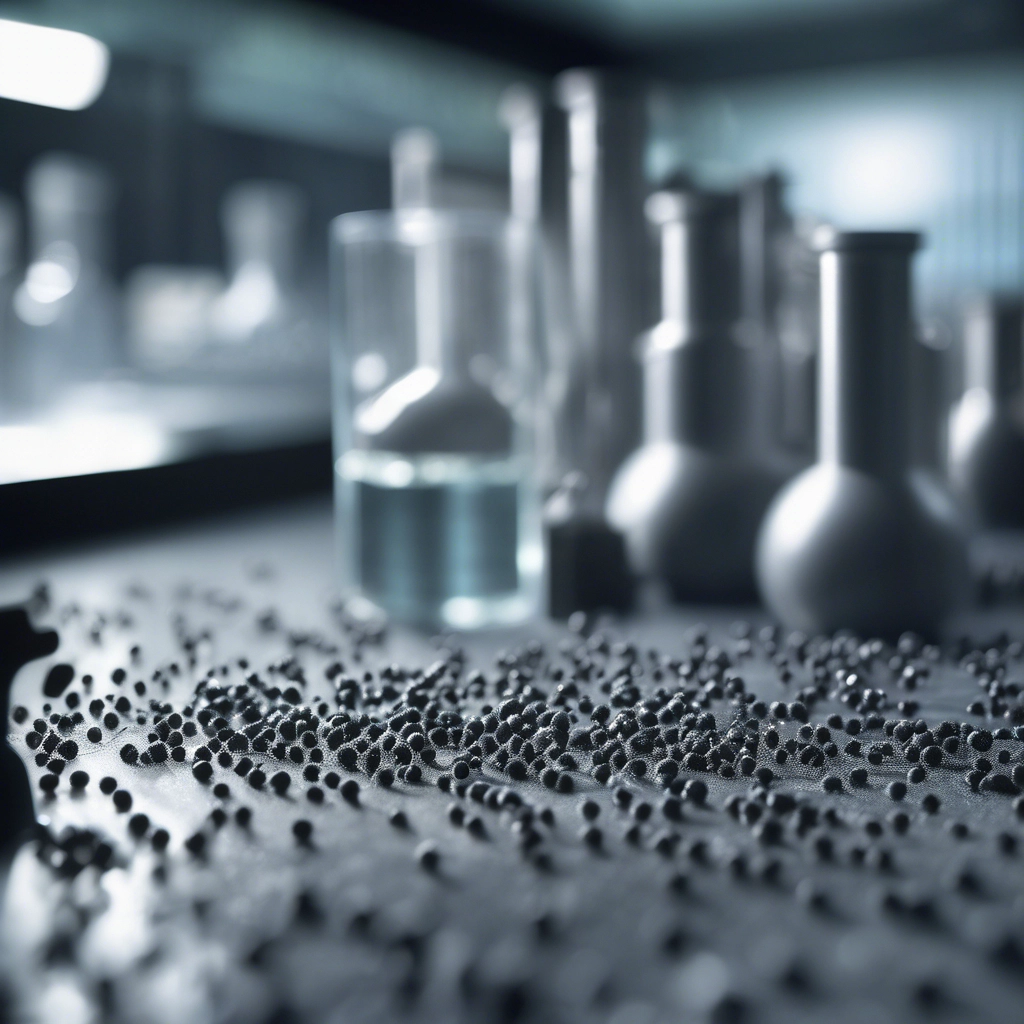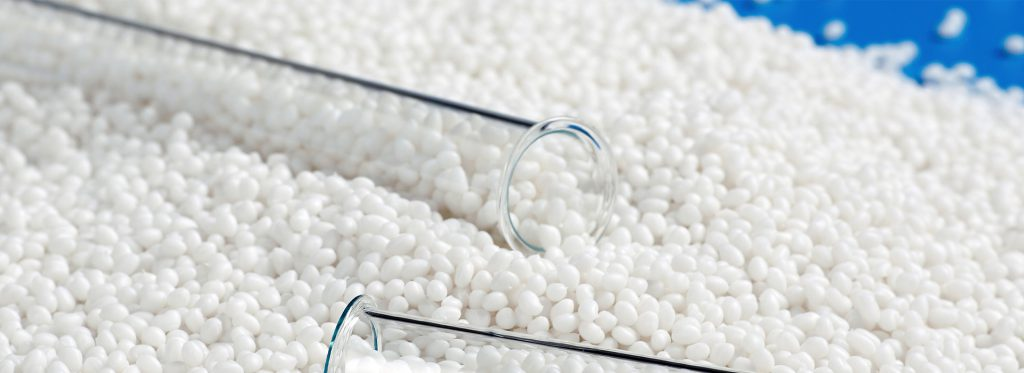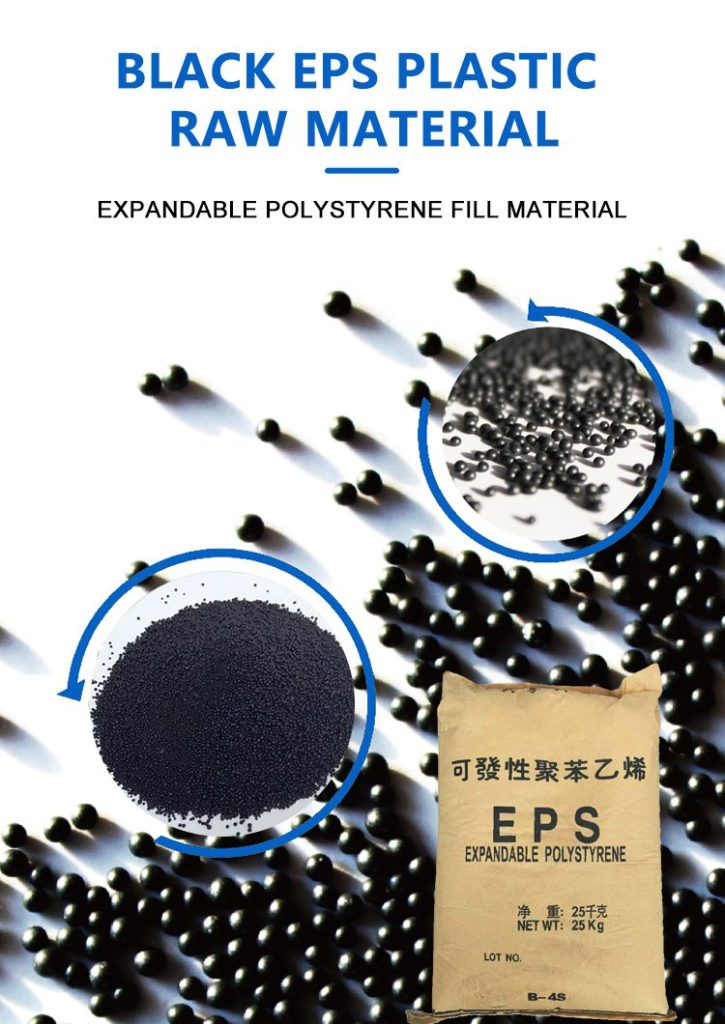Les perles de polystyrène expansé (EPS) sont populaires dans de nombreux domaines en raison de leur poids léger, de leur capacité à maintenir la chaleur et de leur flexibilité pour différentes utilisations. Une préoccupation fréquente à leur sujet, en particulier dans la construction, l'emballage ou les projets liés à l'eau, est de savoir si ces perles peuvent résister à l'eau. Il est important de savoir comment l’EPS réagit à l’humidité pour décider s’il s’agit du bon choix pour les endroits humides ou humides.

Qu'est-ce que les perles de polystyrène expansé (EPS)?
Les perles EPS sont de minuscules pièces de mousse à cellules fermées, créées à partir de résine de polystyrène. Ils deviennent plus grands à l'aide de la vapeur et d'un agent spécial, se transformant en une mousse légère utilisée de nombreuses façons.
Propriétés de base des perles EPS
Ces perles sont célèbres pour être super légères, robustes et excellentes pour bloquer la chaleur. Ils sont forts pour leur poids et fournissent un rembourrage incroyable, ce qui les rend parfaits pour soutenir la construction et protéger les objets.
Applications communes dans diverses industries
Les perles EPS jouent un rôle important dans de nombreux domaines. Dans la construction, ils sont utilisés pour arrêter la perte de chaleur. Dans le transport maritime, ils protègent les objets fragiles. Pour les objets à base d'eau, ils aident les choses à flotter. Par exemple, EPS de qualité E-standard est "largement utilisé dans l'emballage électrique, les matériaux d'isolation thermique, les flotteurs de pêche, l'artisanat, la décoration, les moules de mousse perdue".
La structure et la composition des perles EPS
Pour savoir si l’EPS peut gérer l’eau, nous devons examiner comment elle est construite et de quoi elle est faite.
Structure cellulaire et contenu en air
L'EPS est principalement de l'air - environ 95 à 98% - piégé dans de minuscules cellules fermées de polymère. Cette configuration est la raison pour laquelle il est si bon à maintenir la chaleur et pourquoi il n'absorbe pas beaucoup d'eau.
Caractéristiques du matériau pertinentes pour la résistance à l'eau
Grâce à sa conception à cellule fermée, l’eau ne traverse pas facilement l’EPS. Le polystyrène lui-même repousse l’eau, ce qui l’aide à résister à l’humidité dans des situations régulières.
Interaction de l'eau avec les perles EPS
Même si l’EPS est principalement de l’air et n’aime pas l’eau, que se passe-t-il quand il en touche vraiment un peu?
Comment réagit l'EPS lorsqu'il est exposé à l'eau
Si l'EPS est mouillé pendant une courte période, comme par la pluie ou une éclabousseure rapide, il reste généralement bien. Ses cellules fermées empêchent l'eau d'entrer profondément à l'intérieur.
Effets d'exposition à l'eau à court terme vs à long terme
Un trempage rapide dans l'eau ne nuit pas beaucoup à l'EPS. Mais si elle reste humide pendant longtemps, surtout sous pression ou si elle est rayée, un peu d’eau peut se glisser à travers de minuscules défauts ou interférences.
Prenez le module de contrôle des inondations AquaGuard par HUASHENG comme exemple. Leur module d'urgence EPS hydrophobe (taux d'absorption d'eau < 0,5 %) montre que l'EPS traité peut maintenir l'eau hors même pendant les inondations.
Action capillaire et comportement de tension de surface
Avec sa surface lisse et ses cellules non poreuses, l’eau ne se glisse pas dans l’EPS entier par action capillaire. Mais si les perles ne sont pas bien jointes ou endommagées, un peu d’eau pourrait glisser à travers les espaces entre elles.
Facteurs qui influencent la résistance à l'eau de l'EPS
Tous les types d'EPS ne traitent pas l'humidité de la même manière. Quelques choses déterminent à quel point il garde l'eau dehors.
Considérations concernant la densité et la taille des perles
EPS avec une densité plus élevée a des perles plus serrées et des espaces plus petits. Par exemple, le noir de carbone grade FGE-101, avec une taille de perle de 1,30 à 1,60 mm et une première expansion de 40 à 60, fonctionne bien pour des utilisations denses nécessitant une résistance à l'eau.
Impact de la qualité de fabrication et des additifs
La façon dont les perles collaient ensemble pendant la mise en forme est très importante pour garder l'eau dehors. Des produits supplémentaires comme les bloquants de flamme ou les agents hydrorépulsifs peuvent le rendre encore meilleur dans les endroits humides.
La qualité retardante à la flamme B1 de HUASHENG pour les murs de construction améliore non seulement la sécurité incendie, mais augmente également les économies d'énergie de 14%, montrant une qualité de matériau plus forte.
Conditions environnementales qui influent sur les performances
Les changements de chaleur peuvent faire croître ou rétrécir l'EPS, créant éventuellement de minuscules fissures au fil du temps. La lumière solaire peut également usurer des surfaces non protégées s’elles ne sont pas recouvertes ou revêtues.
Comparaison de l'EPS avec d'autres matériaux imperméables
Pour vraiment juger à quel point l’EPS conserve l’eau, il est utile de l’empiler par rapport à d’autres produits utilisés pour les mêmes tâches.
EPS vs mousse de polyuréthane
La mousse de polyuréthane a souvent des cellules ouvertes sauf si elle est faite différemment. Contrairement à la mousse PU régulière qui absorbe plus d'eau au fil du temps, l'EPS standard maintient sa forme mieux lorsqu'il est mouillé.
EPS vs XPS (polystyrène extrudé)
XPS est similaire à EPS mais a une construction à cellule fermée plus lisse d'être pressé pendant la fabrication. Pour cette raison, XPS fonctionne généralement mieux contre l'eau sur de longues périodes par rapport aux perles EPS régulières.
Avantages et limitations dans les environnements sujets à l'humidité
Alors que le XPS pourrait battre l’EPS standard en termes de durabilité sous l’eau, des options hydrophobes spéciales comme AquaGuard de HUASHENG prouvent que le polystyrène expansé sur mesure peut fonctionner étonnamment même en cas d’inondation.
Méthodes d'essai pour l'évaluation de la résistance à l'eau en EPS
Pour savoir à quel point un produit EPS est bon à bloquer l'eau, nous nous appuyons sur des méthodes de test établies.
Essais et protocoles standard de l'industrie
Les essais de trempage en eau suivent généralement les règles ASTM C272. Les échantillons sont submergés pendant longtemps, puis vérifiés pour le poids supplémentaire de l'eau qu'ils ont pris.
Interpréter les résultats des essais pour une utilisation pratique
Si un test montre que moins de 2% d'eau est trempé, il est généralement bon pour l'isolation. Les modules AquaGuard de HUASHENG affichent un « taux d’absorption d’eau < 0,5 % », ce qui en fait l’un des meilleurs pour les barrières aux inondations ou les utilisations à base d’eau.
Spécifique à l'application Considérations concernant les besoins en étanchéité
Différents domaines utilisent du polystyrène expansé en fonction de leurs propres besoins en matière de résistance à l'eau. Des solutions peuvent être trouvées pour répondre à ces besoins.
Utilisation de l'EPS dans la construction et l'isolation
EPS est souvent assis derrière les couvertures murales où il ne reçoit pas beaucoup de pluie mais doit toujours bien bloquer la chaleur. Les grades retardants à la flamme ajoutent de la sécurité aux bâtiments tout en restant solides dans les endroits humides.
Dans le projet GreenBuild Eco-city de HUASHENG, « Le taux global d’économie d’énergie du bâtiment a augmenté de 14% et a obtenu la certification LEED Green Building Gold ».
Applications maritimes et d'emballage
Des choses comme les bouées, les flotteurs de pêche et les boîtes à fruits de mer bénéficient de la puissance flottante et de la faible absorption d'eau de types EPS bien fabriqués et denses comme les séries E-101 ou P-201 construites juste pour ces emplois.
Améliorer les capacités imperméables par des revêtements ou des traitements
L'ajout de couches comme des couvercles en polymère ou des feuilles minces peut réduire le passage de l'eau. Cela ne nuit pas au blocage thermique ou à la capacité de recycler le matériau.
Introduction à HUASHENG en tant que fournisseur EPS de confiance
Lors de la sélection de produits en polystyrène expansé de première classe pour les taches difficiles, y compris celles humides, HUASHENG brille comme un nom de premier plan. Ils allient de nouvelles idées avec le soin de l’environnement.
Aperçu des catégories de produits de HUASHENG
HUASHENG fournit plusieurs grades uniques conçus pour des besoins spécifiques:
Classe commune
Le matériau standard E est un EPS de base, bon pour les articles avec une mousse de 13 g/l ou plus.

Grade retardant la flamme
Utilisé dans les systèmes de blocage thermique mural où les règles d'incendie nécessitent une sécurité de niveau B1.
Graphite de qualité
Améliore le blocage thermique avec des bits de graphite ajoutés. Il est idéal pour les endroits qui ont besoin de chaleur et de protection contre l'eau.
Protection de l'environnement
L’emballage recyclable EcoPack utilise des particules EPS 100 % recyclables (recyclées 5 fois) et réduit les coûts jusqu’à 28 %.

qualité noir carbone
« Améliore l’isolation thermique et offre d’excellentes propriétés antistatiques. Les produits peuvent atteindre le niveau B1. »
Solutions REPS personnalisées
Des expositions d'art à des expositions mondiales aux unités d'urgence sur les listes nationales d'inondations, REPS personnalisé répondre aux besoins particuliers sans ignorer les objectifs verts.
Engagement envers la qualité, l’innovation et la durabilité
HUASHENG mélange le soin de la planète avec des idées nouvelles. Ils offrent des options de recyclage, des constructions sur mesure et un système mondial de réutilisation des matériaux. Leurs usines certifiées GRS recyclent plus de 95 % des déchets d’usine tout en respectant les règles de sécurité alimentaire de la FDA lorsque cela est nécessaire.
Conclusion
Les perles de polystyrène expansé font un excellent travail de repousser l'eau pendant de courtes périodes en raison de leurs cellules fermées et de leur nature haineuse de l'eau. Ils ne sont pas entièrement étanches dans les cas extrêmes sans ajustements, mais les versions améliorées de HUASHENG montrent qu'un excellent blocage de l'eau est possible avec une planification intelligente et des tests rigoureux.
Que vous gardiez un bâtiment au chaud ou que vous fabriquez des outils flottants pour l’eau, savoir comment la densité, la qualité de fabrication et les extras comme le noir de carbone ou les grades retardants à la flamme affectent la résistance à l’eau aide à obtenir les meilleurs résultats dans de nombreux domaines en utilisant ce matériau pratique.
Questions fréquentes :
Q1: Les perles de polystyrène expansé sont-elles complètement imperméables?
R: Aucune chose ne reste complètement sèche pour toujours dans toutes les situations. Pourtant, grâce à leurs cellules fermées et à leur construction hydrophobe, les perles EPS bien fabriquées font un travail solide pour garder l'eau à l'extérieur dans des utilisations normales comme les panneaux thermiques ou les engins flottants.
Q2: Les perles d'EPS peuvent-elles absorber l'eau au fil du temps?
R: Oui, mais juste un peu si elles sont correctes. Les types spéciaux qui détestent l’eau comme AquaGuard de HUASHENG montrent un « taux d’absorption d’eau < 0,5 % », de sorte qu’ils fonctionnent bien même dans de longs environnements humides comme les systèmes d’inondation ou les travaux d’eau.
Q3: Est-il sûr d'utiliser des perles EPS en extérieur ou dans des environnements humides?
R: Bien sûr, si vous choisissez le bon type. Les grades denses avec des couvertures supplémentaires ou des extras durent bien à l'extérieur. Prenons les solutions retardantes à la flamme de qualité de bâtiment de HUASHENG - elles ont contribué à obtenir la certification LEED et ont augmenté les économies d'énergie de 14%, prouvant qu'elles sont résistantes même dans les intempéries difficiles.






